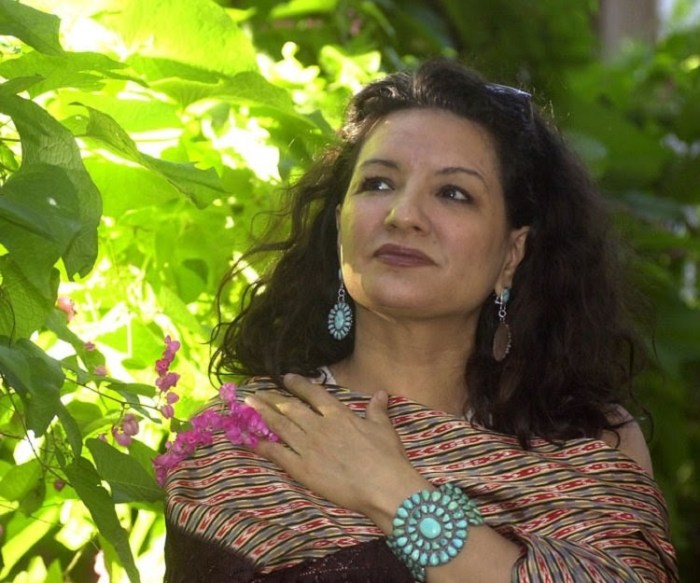Only daughter sandra cisneros theme – Sandra Cisneros’ “Only Daughter” is a poignant short story that explores the complexities of identity, family, and gender through the eyes of Esperanza Cordero, a young girl navigating the expectations and challenges of being the only daughter in her Mexican-American family.
This story delves into universal themes that resonate with readers of all backgrounds, inviting us to reflect on the ways in which our identities are shaped by our experiences and the cultural contexts in which we live.
Esperanza’s journey of self-discovery is a central thread throughout the story, as she grapples with the expectations placed upon her as the “only daughter” and seeks to define her own sense of self. Cisneros skillfully weaves together rich symbolism and vivid imagery to create a narrative that is both deeply personal and universally relatable.
Themes in “Only Daughter”: Only Daughter Sandra Cisneros Theme

Sandra Cisneros’s “Only Daughter” explores various significant themes that reflect the complexities of identity, culture, and societal expectations. These include:
Identity and Self-Discovery
The novel delves into the protagonist’s journey of self-discovery and the formation of her identity. As an only daughter, she grapples with the expectations and pressures placed upon her by her family and culture. Through her experiences and interactions, she navigates her own path, challenging societal norms and defining her own sense of self.
Symbolism and Imagery

Sandra Cisneros’ “Only Daughter” is a rich tapestry of symbolism and imagery that enhances the story’s themes and provides insight into the protagonist’s inner world.
Objects, colors, and sensory details play a significant role in conveying the protagonist’s experiences and emotions.
Objects
- The House:A symbol of the protagonist’s childhood, family, and cultural heritage. Its transformation into a nursing home reflects the passage of time and the loss of innocence.
- The Doll:A representation of the protagonist’s longing for companionship and a sense of belonging. Its loss symbolizes her feelings of isolation and abandonment.
- The Blanket:A source of comfort and security for the protagonist. It evokes memories of her mother and provides a sense of connection to her past.
Colors, Only daughter sandra cisneros theme
- Red:Associated with passion, love, and anger. It is used to convey the protagonist’s intense emotions, such as her longing for her father and her resentment towards her mother.
- Blue:Represents sadness, melancholy, and longing. It reflects the protagonist’s feelings of loneliness and isolation.
- White:Symbolizes purity, innocence, and hope. It is used to evoke the protagonist’s memories of her childhood and her dreams for the future.
Sensory Details
- Sight:The protagonist’s vivid descriptions of her surroundings create a sense of immediacy and authenticity. They reflect her keen observation of the world and her ability to find beauty in the ordinary.
- Sound:The use of silence and noise conveys the protagonist’s inner turmoil. The silence represents her loneliness and isolation, while the noise reflects her overwhelming emotions.
- Smell:The protagonist’s memories of her mother are often associated with the smell of her cooking. This evokes a sense of nostalgia and longing for the past.
Through the skillful use of symbolism and imagery, Cisneros creates a multi-layered narrative that explores the complex themes of identity, family, and the search for belonging.
Narrative Structure and Point of View
Sandra Cisneros’s “Only Daughter” employs a unique narrative structure and point of view that significantly shapes the story’s impact and meaning.
The story is presented as a series of vignettes, each offering a glimpse into the life of the protagonist, Esperanza. These vignettes are not arranged chronologically but rather jump back and forth in time, creating a fragmented and disjointed narrative that reflects the protagonist’s own fragmented memories and experiences.
First-Person Narration
The story is narrated from Esperanza’s first-person perspective, which allows readers to experience the events of the story through her eyes and thoughts. This intimate perspective provides readers with a deep understanding of Esperanza’s feelings, motivations, and struggles.
Esperanza’s narration is often unreliable, as she frequently embellishes or distorts events to fit her own perceptions and desires. This unreliability forces readers to question the truthfulness of her account, adding an additional layer of complexity to the story.
Impact of Point of View
The use of first-person narration and a fragmented narrative structure in “Only Daughter” has several important effects:
- It creates a sense of immediacy and intimacy, allowing readers to connect with Esperanza on a personal level.
- It highlights the subjectivity of memory and experience, demonstrating how our perceptions can shape our understanding of events.
- It adds an element of mystery and intrigue, as readers are forced to piece together the story from Esperanza’s often unreliable account.
Cultural and Historical Context

Sandra Cisneros’ “Only Daughter” is a poignant and deeply personal story that reflects the cultural and historical experiences of Mexican-American women. Set in the working-class neighborhood of Little Village in Chicago, the story explores the challenges and triumphs of a young Chicana woman navigating her identity in a society marked by racism and sexism.
Influence of Sandra Cisneros’ Experiences
Cisneros’ own experiences as a Chicana writer heavily influenced the story. Born in Chicago to Mexican immigrant parents, Cisneros grew up in a bilingual and bicultural household. Her experiences of straddling two cultures shaped her understanding of the struggles faced by Mexican-American women.
In “Only Daughter,” Cisneros draws upon her own experiences to create a relatable and authentic narrative.
Reflection of Mexican-American Women’s Experiences
The story delves into the specific experiences and struggles faced by Mexican-American women. It explores themes of cultural assimilation, gender roles, and the challenges of balancing tradition with modernity. Through the protagonist, Esperanza, Cisneros gives voice to the hopes, dreams, and frustrations of Mexican-American women in the United States.
Commonly Asked Questions
What is the significance of the story’s title?
The title “Only Daughter” highlights Esperanza’s unique position within her family and the expectations that come with it. As the only daughter, she is expected to fulfill certain roles and responsibilities, which can both empower and constrain her.
How does Cisneros use symbolism to develop the themes of the story?
Cisneros uses various symbols throughout the story to enhance the themes. For example, the color blue is associated with Esperanza’s sense of isolation and longing, while the image of the Virgin of Guadalupe represents her connection to her cultural heritage.
What is the impact of the first-person narration on the story?
The first-person narration allows readers to experience the story through Esperanza’s eyes, creating a sense of intimacy and immediacy. It also highlights the subjective nature of Esperanza’s experiences and the ways in which her perceptions shape her understanding of the world.